[English] 日本語
 Yorodumi
Yorodumi- PDB-9e8j: Nub1/Fat10-processing human 26S proteasome bound to Txnl1 with Rp... -
+ Open data
Open data
- Basic information
Basic information
| Entry | Database: PDB / ID: 9e8j | ||||||
|---|---|---|---|---|---|---|---|
| Title | Nub1/Fat10-processing human 26S proteasome bound to Txnl1 with Rpt1 at top of spiral staircase | ||||||
 Components Components |
| ||||||
 Keywords Keywords | MOTOR PROTEIN / HYDROLASE/PROTEIN BINDING / 26S Proteasome / Nub1 / Fat10 / HYDROLASE-PROTEIN BINDING complex | ||||||
| Function / homology |  Function and homology information Function and homology informationregulation of ubiquitin-dependent protein catabolic process / positive regulation of inclusion body assembly / disulfide oxidoreductase activity / thyrotropin-releasing hormone receptor binding / host-mediated perturbation of viral transcription / Impaired BRCA2 translocation to the nucleus / Impaired BRCA2 binding to SEM1 (DSS1) / cytosolic proteasome complex / Hydrolases; Acting on peptide bonds (peptidases); Omega peptidases / proteasome accessory complex ...regulation of ubiquitin-dependent protein catabolic process / positive regulation of inclusion body assembly / disulfide oxidoreductase activity / thyrotropin-releasing hormone receptor binding / host-mediated perturbation of viral transcription / Impaired BRCA2 translocation to the nucleus / Impaired BRCA2 binding to SEM1 (DSS1) / cytosolic proteasome complex / Hydrolases; Acting on peptide bonds (peptidases); Omega peptidases / proteasome accessory complex / integrator complex / purine ribonucleoside triphosphate binding / meiosis I / proteasome regulatory particle / positive regulation of proteasomal protein catabolic process / proteasome-activating activity / proteasome regulatory particle, lid subcomplex / proteasome regulatory particle, base subcomplex / metal-dependent deubiquitinase activity / negative regulation of programmed cell death / protein K63-linked deubiquitination / RHOBTB1 GTPase cycle / RND1 GTPase cycle / Regulation of ornithine decarboxylase (ODC) / RND2 GTPase cycle / RND3 GTPase cycle / Proteasome assembly / Cross-presentation of soluble exogenous antigens (endosomes) / Homologous DNA Pairing and Strand Exchange / Defective homologous recombination repair (HRR) due to BRCA1 loss of function / Defective HDR through Homologous Recombination Repair (HRR) due to PALB2 loss of BRCA1 binding function / Defective HDR through Homologous Recombination Repair (HRR) due to PALB2 loss of BRCA2/RAD51/RAD51C binding function / Resolution of D-loop Structures through Synthesis-Dependent Strand Annealing (SDSA) / proteasome core complex / Resolution of D-loop Structures through Holliday Junction Intermediates / Somitogenesis / K63-linked deubiquitinase activity / RHOV GTPase cycle / Impaired BRCA2 binding to RAD51 / proteasome binding / transcription factor binding / regulation of protein catabolic process / myofibril / proteasome storage granule / RHOU GTPase cycle / Presynaptic phase of homologous DNA pairing and strand exchange / protein-disulfide reductase activity / response to tumor necrosis factor / general transcription initiation factor binding / blastocyst development / polyubiquitin modification-dependent protein binding / protein deubiquitination / positive regulation of RNA polymerase II transcription preinitiation complex assembly / immune system process / response to type II interferon / endopeptidase activator activity / NF-kappaB binding / proteasome assembly / proteasome core complex, alpha-subunit complex / mRNA export from nucleus / RHOBTB2 GTPase cycle / SARS-CoV-1 targets host intracellular signalling and regulatory pathways / inclusion body / enzyme regulator activity / ERAD pathway / regulation of proteasomal protein catabolic process / proteasome complex / proteolysis involved in protein catabolic process / sarcomere / Regulation of activated PAK-2p34 by proteasome mediated degradation / Autodegradation of Cdh1 by Cdh1:APC/C / APC/C:Cdc20 mediated degradation of Securin / N-glycan trimming in the ER and Calnexin/Calreticulin cycle / Asymmetric localization of PCP proteins / Ubiquitin-dependent degradation of Cyclin D / SCF-beta-TrCP mediated degradation of Emi1 / NIK-->noncanonical NF-kB signaling / stem cell differentiation / TNFR2 non-canonical NF-kB pathway / AUF1 (hnRNP D0) binds and destabilizes mRNA / Vpu mediated degradation of CD4 / Assembly of the pre-replicative complex / Ubiquitin-Mediated Degradation of Phosphorylated Cdc25A / Degradation of DVL / Cdc20:Phospho-APC/C mediated degradation of Cyclin A / Dectin-1 mediated noncanonical NF-kB signaling / lipopolysaccharide binding / Degradation of AXIN / Hh mutants are degraded by ERAD / negative regulation of inflammatory response to antigenic stimulus / Activation of NF-kappaB in B cells / P-body / Degradation of GLI1 by the proteasome / Hedgehog ligand biogenesis / G2/M Checkpoints / Defective CFTR causes cystic fibrosis / GSK3B and BTRC:CUL1-mediated-degradation of NFE2L2 / Autodegradation of the E3 ubiquitin ligase COP1 / Negative regulation of NOTCH4 signaling / Regulation of RUNX3 expression and activity Similarity search - Function | ||||||
| Biological species |  Homo sapiens (human) Homo sapiens (human) | ||||||
| Method | ELECTRON MICROSCOPY / single particle reconstruction / cryo EM / Resolution: 3.47 Å | ||||||
 Authors Authors | Arkinson, C. / Gee, C.L. / Martin, A. | ||||||
| Funding support |  United States, 1items United States, 1items
| ||||||
 Citation Citation |  Journal: bioRxiv / Year: 2024 Journal: bioRxiv / Year: 2024Title: Structural landscape of AAA+ ATPase motor states in the substrate-degrading human 26S proteasome reveals conformation-specific binding of TXNL1. Authors: Connor Arkinson / Christine L Gee / Zeyuan Zhang / Ken C Dong / Andreas Martin /  Abstract: The 26S proteasome targets many cellular proteins for degradation during general homeostasis, protein quality control, and the regulation of vital processes. A broad range of proteasome-interacting ...The 26S proteasome targets many cellular proteins for degradation during general homeostasis, protein quality control, and the regulation of vital processes. A broad range of proteasome-interacting cofactors thereby modulates these functions and aids in substrate degradation. Here, we solved several high-resolution structures of the redox active cofactor TXNL1 bound to the human 26S proteasome at saturating and sub-stoichiometric concentrations by time resolved cryo-EM. We identified distinct binding modes of TXNL1 that depend on the proteasome conformational and ATPase motor states. Together with biophysical and biochemical experiments, our structural studies reveal that the resting-state proteasome prior to substrate engagement with the ATPase motor binds TXNL1 with low affinity and in variable positions on top of the Rpn11 deubiquitinase. In contrast, the actively degrading proteasome shows additional interactions leading to high-affinity TXNL1 binding, whereby TXNL1's C-terminal tail covers the catalytic groove of the Rpn11 deubiquitinase and coordinates the active-site Zn. Furthermore, these cryo-EM structures of the degrading proteasome capture the ATPase hexamer in all registers of spiral-staircase arrangements and thus visualize the complete ATP-hydrolysis cycle of the AAA+ motor, indicating temporally asymmetric hydrolysis and conformational changes in bursts during mechanical substrate unfolding and translocation. Remarkably, we catch the proteasome in the act of unfolding the beta-barrel mEos3.2 substrate while the ATPase hexamer is in a particular spiral staircase register. Our findings challenge current models for protein translocation through hexameric AAA+ motors and reveal how the proteasome uses its distinct but broad range of conformational states to coordinate cofactor binding and substrate processing. | ||||||
| History |
|
- Structure visualization
Structure visualization
| Structure viewer | Molecule:  Molmil Molmil Jmol/JSmol Jmol/JSmol |
|---|
- Downloads & links
Downloads & links
- Download
Download
| PDBx/mmCIF format |  9e8j.cif.gz 9e8j.cif.gz | 1.6 MB | Display |  PDBx/mmCIF format PDBx/mmCIF format |
|---|---|---|---|---|
| PDB format |  pdb9e8j.ent.gz pdb9e8j.ent.gz | 1.2 MB | Display |  PDB format PDB format |
| PDBx/mmJSON format |  9e8j.json.gz 9e8j.json.gz | Tree view |  PDBx/mmJSON format PDBx/mmJSON format | |
| Others |  Other downloads Other downloads |
-Validation report
| Summary document |  9e8j_validation.pdf.gz 9e8j_validation.pdf.gz | 2.3 MB | Display |  wwPDB validaton report wwPDB validaton report |
|---|---|---|---|---|
| Full document |  9e8j_full_validation.pdf.gz 9e8j_full_validation.pdf.gz | 2.3 MB | Display | |
| Data in XML |  9e8j_validation.xml.gz 9e8j_validation.xml.gz | 205.4 KB | Display | |
| Data in CIF |  9e8j_validation.cif.gz 9e8j_validation.cif.gz | 326.3 KB | Display | |
| Arichive directory |  https://data.pdbj.org/pub/pdb/validation_reports/e8/9e8j https://data.pdbj.org/pub/pdb/validation_reports/e8/9e8j ftp://data.pdbj.org/pub/pdb/validation_reports/e8/9e8j ftp://data.pdbj.org/pub/pdb/validation_reports/e8/9e8j | HTTPS FTP |
-Related structure data
| Related structure data |  47722MC  9e8gC  9e8hC  9e8iC  9e8kC  9e8lC  9e8nC  9e8oC 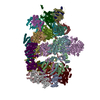 9e8qC M: map data used to model this data C: citing same article ( |
|---|---|
| Similar structure data | Similarity search - Function & homology  F&H Search F&H Search |
- Links
Links
- Assembly
Assembly
| Deposited unit | 
|
|---|---|
| 1 |
|
- Components
Components
-26S proteasome regulatory subunit ... , 4 types, 4 molecules ABDF
| #1: Protein | Mass: 48700.805 Da / Num. of mol.: 1 / Source method: isolated from a natural source / Source: (natural)  Homo sapiens (human) / Cell line: HEK293 / References: UniProt: P35998 Homo sapiens (human) / Cell line: HEK293 / References: UniProt: P35998 |
|---|---|
| #2: Protein | Mass: 49260.504 Da / Num. of mol.: 1 / Source method: isolated from a natural source / Source: (natural)  Homo sapiens (human) / Cell line: HEK293 / References: UniProt: P62191 Homo sapiens (human) / Cell line: HEK293 / References: UniProt: P62191 |
| #4: Protein | Mass: 47426.141 Da / Num. of mol.: 1 / Source method: isolated from a natural source / Source: (natural)  Homo sapiens (human) / Cell line: HEK293 / References: UniProt: P43686 Homo sapiens (human) / Cell line: HEK293 / References: UniProt: P43686 |
| #6: Protein | Mass: 49266.457 Da / Num. of mol.: 1 / Source method: isolated from a natural source / Source: (natural)  Homo sapiens (human) / Cell line: HEK293 / References: UniProt: P17980 Homo sapiens (human) / Cell line: HEK293 / References: UniProt: P17980 |
-26S protease regulatory subunit ... , 2 types, 2 molecules CE
| #3: Protein | Mass: 45694.047 Da / Num. of mol.: 1 / Source method: isolated from a natural source / Source: (natural)  Homo sapiens (human) / Cell line: HEK293 / References: UniProt: P62195 Homo sapiens (human) / Cell line: HEK293 / References: UniProt: P62195 |
|---|---|
| #5: Protein | Mass: 44241.008 Da / Num. of mol.: 1 / Source method: isolated from a natural source / Source: (natural)  Homo sapiens (human) / Cell line: HEK293 / References: UniProt: P62333 Homo sapiens (human) / Cell line: HEK293 / References: UniProt: P62333 |
-Proteasome subunit alpha type- ... , 7 types, 7 molecules GHIJKLM
| #7: Protein | Mass: 27432.459 Da / Num. of mol.: 1 / Source method: isolated from a natural source / Source: (natural)  Homo sapiens (human) / Cell line: HEK293 Homo sapiens (human) / Cell line: HEK293References: UniProt: P60900, proteasome endopeptidase complex |
|---|---|
| #8: Protein | Mass: 25927.535 Da / Num. of mol.: 1 / Source method: isolated from a natural source / Source: (natural)  Homo sapiens (human) / Cell line: HEK293 Homo sapiens (human) / Cell line: HEK293References: UniProt: P25787, proteasome endopeptidase complex |
| #9: Protein | Mass: 29525.842 Da / Num. of mol.: 1 / Source method: isolated from a natural source / Source: (natural)  Homo sapiens (human) / Cell line: HEK293 Homo sapiens (human) / Cell line: HEK293References: UniProt: P25789, proteasome endopeptidase complex |
| #10: Protein | Mass: 27929.891 Da / Num. of mol.: 1 / Source method: isolated from a natural source / Source: (natural)  Homo sapiens (human) / Cell line: HEK293 / References: UniProt: O14818 Homo sapiens (human) / Cell line: HEK293 / References: UniProt: O14818 |
| #11: Protein | Mass: 26494.080 Da / Num. of mol.: 1 / Source method: isolated from a natural source / Source: (natural)  Homo sapiens (human) / Cell line: HEK293 / References: UniProt: P28066 Homo sapiens (human) / Cell line: HEK293 / References: UniProt: P28066 |
| #12: Protein | Mass: 29595.627 Da / Num. of mol.: 1 / Source method: isolated from a natural source / Source: (natural)  Homo sapiens (human) / Cell line: HEK293 Homo sapiens (human) / Cell line: HEK293References: UniProt: P25786, proteasome endopeptidase complex |
| #13: Protein | Mass: 28469.252 Da / Num. of mol.: 1 / Source method: isolated from a natural source / Source: (natural)  Homo sapiens (human) / Cell line: HEK293 Homo sapiens (human) / Cell line: HEK293References: UniProt: P25788, proteasome endopeptidase complex |
-26S proteasome non-ATPase regulatory subunit ... , 11 types, 11 molecules UVWXYZabcdf
| #14: Protein | Mass: 105958.234 Da / Num. of mol.: 1 / Source method: isolated from a natural source / Source: (natural)  Homo sapiens (human) / Cell line: HEK293 / References: UniProt: Q99460 Homo sapiens (human) / Cell line: HEK293 / References: UniProt: Q99460 |
|---|---|
| #15: Protein | Mass: 61066.500 Da / Num. of mol.: 1 / Source method: isolated from a natural source / Source: (natural)  Homo sapiens (human) / Cell line: HEK293 / References: UniProt: O43242 Homo sapiens (human) / Cell line: HEK293 / References: UniProt: O43242 |
| #16: Protein | Mass: 52979.359 Da / Num. of mol.: 1 / Source method: isolated from a natural source / Source: (natural)  Homo sapiens (human) / Cell line: HEK293 / References: UniProt: O00232 Homo sapiens (human) / Cell line: HEK293 / References: UniProt: O00232 |
| #17: Protein | Mass: 47526.688 Da / Num. of mol.: 1 / Source method: isolated from a natural source / Source: (natural)  Homo sapiens (human) / References: UniProt: O00231 Homo sapiens (human) / References: UniProt: O00231 |
| #18: Protein | Mass: 45592.285 Da / Num. of mol.: 1 / Source method: isolated from a natural source / Source: (natural)  Homo sapiens (human) / References: UniProt: Q15008 Homo sapiens (human) / References: UniProt: Q15008 |
| #19: Protein | Mass: 37086.441 Da / Num. of mol.: 1 / Source method: isolated from a natural source / Source: (natural)  Homo sapiens (human) / Cell line: HEK293 / References: UniProt: P51665 Homo sapiens (human) / Cell line: HEK293 / References: UniProt: P51665 |
| #20: Protein | Mass: 42995.359 Da / Num. of mol.: 1 / Source method: isolated from a natural source / Source: (natural)  Homo sapiens (human) / Cell line: HEK293 / References: UniProt: Q9UNM6 Homo sapiens (human) / Cell line: HEK293 / References: UniProt: Q9UNM6 |
| #21: Protein | Mass: 40781.590 Da / Num. of mol.: 1 / Source method: isolated from a natural source / Source: (natural)  Homo sapiens (human) / Cell line: HEK293 / References: UniProt: P55036 Homo sapiens (human) / Cell line: HEK293 / References: UniProt: P55036 |
| #22: Protein | Mass: 46940.898 Da / Num. of mol.: 1 Source method: isolated from a genetically manipulated source Source: (gene. exp.)  Homo sapiens (human) / Cell line: HEK293 / Gene: PSMD14 / Cell line (production host): HEK293-httb / Production host: Homo sapiens (human) / Cell line: HEK293 / Gene: PSMD14 / Cell line (production host): HEK293-httb / Production host:  Homo sapiens (human) / References: UniProt: O00487 Homo sapiens (human) / References: UniProt: O00487 |
| #23: Protein | Mass: 39667.871 Da / Num. of mol.: 1 / Source method: isolated from a natural source / Source: (natural)  Homo sapiens (human) / Cell line: HEK293 / References: UniProt: P48556 Homo sapiens (human) / Cell line: HEK293 / References: UniProt: P48556 |
| #25: Protein | Mass: 100313.625 Da / Num. of mol.: 1 / Source method: isolated from a natural source / Source: (natural)  Homo sapiens (human) / Cell line: HEK293 / References: UniProt: Q13200 Homo sapiens (human) / Cell line: HEK293 / References: UniProt: Q13200 |
-Protein , 3 types, 3 molecules egu
| #24: Protein | Mass: 8284.611 Da / Num. of mol.: 1 / Source method: isolated from a natural source / Source: (natural)  Homo sapiens (human) / Cell line: HEK293 / References: UniProt: P60896 Homo sapiens (human) / Cell line: HEK293 / References: UniProt: P60896 |
|---|---|
| #26: Protein | Mass: 69218.562 Da / Num. of mol.: 1 Source method: isolated from a genetically manipulated source Source: (gene. exp.)  Homo sapiens (human) / Gene: NUB1, NYREN18 / Production host: Homo sapiens (human) / Gene: NUB1, NYREN18 / Production host:  |
| #27: Protein | Mass: 32284.229 Da / Num. of mol.: 1 Source method: isolated from a genetically manipulated source Source: (gene. exp.)  Homo sapiens (human) / Gene: TXNL1, TRP32, TXL, TXNL / Production host: Homo sapiens (human) / Gene: TXNL1, TRP32, TXL, TXNL / Production host:  |
-Protein/peptide , 1 types, 1 molecules v
| #28: Protein/peptide | Mass: 1025.246 Da / Num. of mol.: 1 / Source method: isolated from a natural source / Source: (natural)  Homo sapiens (human) Homo sapiens (human) |
|---|
-Non-polymers , 4 types, 12 molecules 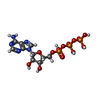
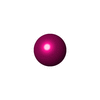
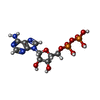
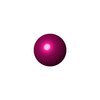



| #29: Chemical | ChemComp-ATP / #30: Chemical | ChemComp-MG / #31: Chemical | #32: Chemical | ChemComp-ZN / | |
|---|
-Details
| Has ligand of interest | Y |
|---|---|
| Has protein modification | Y |
-Experimental details
-Experiment
| Experiment | Method: ELECTRON MICROSCOPY |
|---|---|
| EM experiment | Aggregation state: PARTICLE / 3D reconstruction method: single particle reconstruction |
- Sample preparation
Sample preparation
| Component | Name: Human 26S proteasome complexed with Nub1, Fat10 and TXNL1 Type: COMPLEX / Entity ID: #1-#28 / Source: MULTIPLE SOURCES |
|---|---|
| Molecular weight | Value: 2.6 MDa / Experimental value: NO |
| Source (natural) | Organism:  Homo sapiens (human) Homo sapiens (human) |
| Buffer solution | pH: 7.4 Details: 30 mM HEPES pH7.4, 25 mM NaCl, 25 mM KCl, 3% (v/v) glycerol, 5 mM MgCl2 2 mM ATP and 0.5 mM TCEP. |
| Specimen | Embedding applied: NO / Shadowing applied: NO / Staining applied: NO / Vitrification applied: YES |
| Specimen support | Details: 25 mA / Grid material: GOLD / Grid mesh size: 200 divisions/in. / Grid type: UltrAuFoil R2/2 |
| Vitrification | Instrument: FEI VITROBOT MARK IV / Cryogen name: ETHANE / Humidity: 100 % / Chamber temperature: 285 K |
- Electron microscopy imaging
Electron microscopy imaging
| Experimental equipment |  Model: Titan Krios / Image courtesy: FEI Company |
|---|---|
| Microscopy | Model: TFS KRIOS |
| Electron gun | Electron source:  FIELD EMISSION GUN / Accelerating voltage: 300 kV / Illumination mode: FLOOD BEAM FIELD EMISSION GUN / Accelerating voltage: 300 kV / Illumination mode: FLOOD BEAM |
| Electron lens | Mode: BRIGHT FIELD / Nominal defocus max: 1700 nm / Nominal defocus min: 500 nm / Alignment procedure: BASIC |
| Specimen holder | Cryogen: NITROGEN / Specimen holder model: FEI TITAN KRIOS AUTOGRID HOLDER |
| Image recording | Electron dose: 50 e/Å2 / Film or detector model: GATAN K3 (6k x 4k) |
- Processing
Processing
| CTF correction | Type: PHASE FLIPPING AND AMPLITUDE CORRECTION |
|---|---|
| 3D reconstruction | Resolution: 3.47 Å / Resolution method: FSC 0.143 CUT-OFF / Num. of particles: 19309 / Symmetry type: POINT |
 Movie
Movie Controller
Controller










 PDBj
PDBj





















